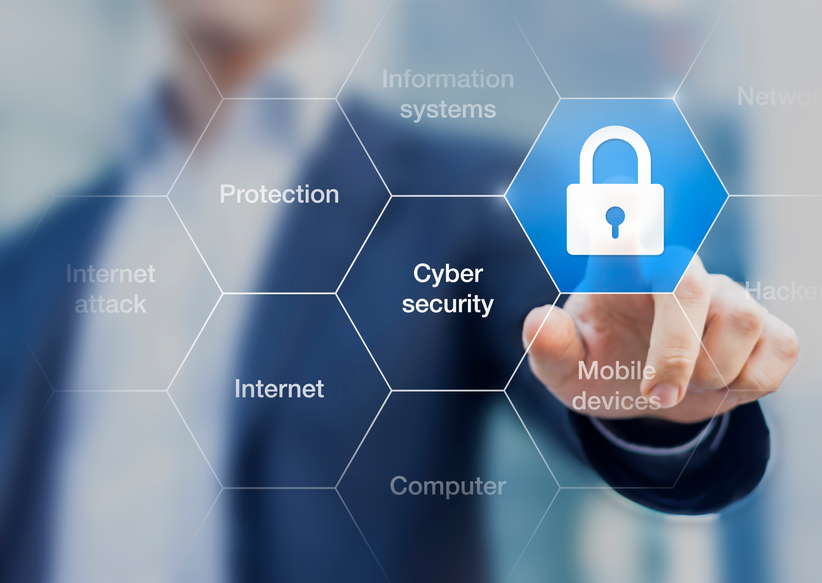In a time when the digital landscape is constantly evolving, cybersecurity has become an indispensable aspect of our daily existence. In today’s tech-driven society, this essay delves into the complexities of cybersecurity and highlights the critical need to safeguard against cyberattacks.
The Growing Digital Environment
The world of digital is growing at a rapid pace. Everything in our lives has a digital record, from the most active stocks to our social media activities. Because of this development, there is now a need for advanced cybersecurity solutions to protect business and individual assets owing to the increase in data collection and storage.
Complexity of Modern Cybersecurity
Installing antivirus software is no longer the only step in cybersecurity. To defend against a broad spectrum of digital dangers, it has developed into a complicated area comprising several tactics. Technology’s dynamic nature and the skill of cybercriminals, who are always coming up with new ways to exploit weaknesses, are what fuel this complexity.
The Digital Age’s Vulnerabilities
Software Vulnerabilities
One of the main points of entry for hackers is software vulnerabilities. These faults may be the result of improper program design, out-of-date software, or unpatched security vulnerabilities. Attackers utilize these flaws to get into systems without authorization or damage data and systems.
Hardware Vulnerabilities
The physical parts of gadgets are the source of hardware vulnerabilities. From PCs to routers, everything falls under this category. Devices may be vulnerable to attacks such as data interception or remote system control due to flaws in hardware design or manufacturing methods.
Securing Personal Devices
Cyberattacks target mobile devices because they are always connected and store a lot of personal data. Users may protect them by using strong passwords, updating their operating systems regularly, and being cautious when installing software from unreliable sources. If the device is misplaced or stolen, it is also imperative to enable remote wiping capabilities.
In terms of cybersecurity, home networks are generally disregarded. Using WPA3 security for Wi-Fi, upgrading router firmware often, and changing the default router passwords are all necessary to secure these. Separating networks for visitors and smart home gadgets is also a wise move.
Cybercriminals may use Internet of Things devices as access points, such as security cameras and smart thermostats. Users should unplug devices when not in use, change the default passwords, and update the firmware often to safeguard these devices. Examining an IoT device’s security characteristics before buying it is also crucial.
Cybersecurity Best Practices
Formulating an Effective Password Strategy. Strong password policies are essential for cybersecurity:
- Make lengthy, complicated passwords with a mix of symbols, numbers, and characters.
- Don’t use the same password on several different websites.
- For more security, think about utilizing a password manager.
Put Two-Factor Authentication into Practice. An additional layer of protection is added by two-factor authentication (2FA), which requires the user to have something with them at all times, such as a mobile device, in addition to their password and log in.
Frequent patch management and software updates. Update all software regularly:
- Update firmware, apps, and operating systems regularly.
- Put in place a patch management strategy to guarantee that important security updates are applied on time.
Employee Training and Awareness Programs
Employees are often the first line of defense:
- Conduct regular cybersecurity training sessions.
- Educate employees about recognizing phishing attempts and secure password practices.
The Role of Artificial Intelligence in Cyber Defense
Threat detection in cybersecurity has been transformed by artificial intelligence (AI). Artificial intelligence systems can discover probable risks faster than humans can by analyzing enormous volumes of data at remarkable rates. Artificial intelligence systems may identify patterns, anticipate possible assaults, and notify managers of odd activity by learning from past data. The potential harm may be greatly decreased by responding to cyber attacks more quickly thanks to this proactive approach to threat identification.
AI integration has improved endpoint security significantly. To quickly identify and isolate suspicious activity, AI-driven solutions can monitor and analyze user behaviors, network traffic, and application performance in real time. The capacity to identify advanced persistent threats (APTs) and zero-day vulnerabilities, which conventional security procedures can overlook, is very helpful. Consequently, in an ever-evolving cyber environment, AI offers a more dynamic and adaptable method of endpoint protection.
The Future of Cybersecurity
Forecasts and Emerging Patterns. Anticipations in the realm of cybersecurity point toward an escalating reliance on artificial intelligence and machine learning, exerting a profound influence on its future trajectory. The ever-escalating intricacies of cyber threats necessitate the adoption of advanced analytics and automated defense mechanisms. Simultaneously, the advent of quantum computing presents a dichotomy, offering both challenges and opportunities in the cybersecurity domain, potentially supplanting existing encryption paradigms.
Quantum-Resistant Cryptography. The dawn of quantum computing heralds a prospective transformation across multiple industries, most notably in the cybersecurity realm. A paramount focal point within this transformation is the cultivation of encryption methodologies impervious to the colossal computational capabilities wielded by quantum computers. Research endeavors in post-quantum encryption algorithms, assuring enduring data security even in a future where quantum computers are ubiquitous, constitute an integral facet of this evolution.
Nurturing the Cybersecurity Workforce. A salient trend delineating the future contours of cybersecurity pertains to the concerted development of its workforce. As cyber threats continue to burgeon in complexity and volume, an augmented demand materializes for adept cybersecurity professionals. Consequently, organizations and educational institutions are redoubling their efforts to cultivate a workforce equipped to confront and mitigate contemporary cyber threats, encompassing proficiency in AI and quantum computing within their skill repertoire.
Delving into the realm of cybersecurity, we discern that the task of fortifying digital bastions in our interlinked global village presents itself as a constantly shifting and formidable odyssey. As the specter of cyber perils metamorphoses and artificial intelligence emerges as a linchpin in our defensive arsenal, the imperative for all-encompassing and anticipatory tactics becomes starkly evident.
In this epoch of digital proliferation, unyielding vigilance in cybersecurity methodologies is non-negotiable. From safeguarding personal apparatus to orchestrating extensive cloud-centric enterprises, the imperative for stalwart defense stratagems is perennial. The mercurial temperament of cyber threats demands perpetual scholarly pursuit and adaptability to stay apace.
Peering into the horizon, the cybersecurity terrain is poised to grapple with novel challenges and openings, notably with the burgeoning realm of AI and the dawn of quantum computation. Equipping for these forthcoming transformations transcends technological maneuvers; it also entails nurturing a cadre of adept professionals primed to tackle looming cyber dangers.
Cybersecurity emerges as a communal duty, transcending the confines of individuals and collectives; it beckons for worldwide synergy. Through nurturing individual cognizance, bolstering organizational dedication, and advocating for cross-border cooperation, all actors can play a part in cultivating a more secure digital cosmos. As we harvest the fruits of the digital era, our unwavering pledge to its safety and robustness remains paramount.


